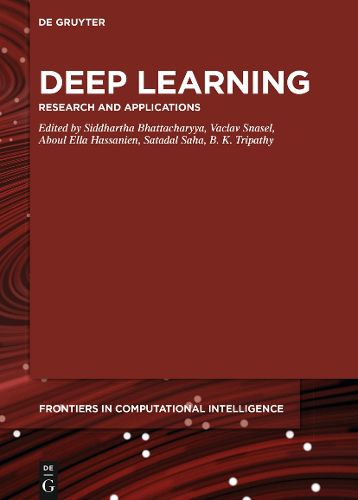Readings Newsletter
Become a Readings Member to make your shopping experience even easier.
Sign in or sign up for free!
You’re not far away from qualifying for FREE standard shipping within Australia
You’ve qualified for FREE standard shipping within Australia
The cart is loading…






This title is printed to order. This book may have been self-published. If so, we cannot guarantee the quality of the content. In the main most books will have gone through the editing process however some may not. We therefore suggest that you be aware of this before ordering this book. If in doubt check either the author or publisher’s details as we are unable to accept any returns unless they are faulty. Please contact us if you have any questions.
This book focuses on the fundamentals of deep learning along with reporting on the current state-of-art research on deep learning. In addition, it provides an insight of deep neural networks in action with illustrative coding examples.
Deep learning is a new area of machine learning research which has been introduced with the objective of moving ML closer to one of its original goals, i.e. artificial intelligence. Deep learning was developed as an ML approach to deal with complex input-output mappings. While traditional methods successfully solve problems where final value is a simple function of input data, deep learning techniques are able to capture composite relations between non-immediately related fields, for example between air pressure recordings and English words, millions of pixels and textual description, brand-related news and future stock prices and almost all real world problems.
Deep learning is a class of nature inspired machine learning algorithms that uses a cascade of multiple layers of nonlinear processing units for feature extraction and transformation. Each successive layer uses the output from the previous layer as input. The learning may be supervised (e.g. classification) and/or unsupervised (e.g. pattern analysis) manners. These algorithms learn multiple levels of representations that correspond to different levels of abstraction by resorting to some form of gradient descent for training via backpropagation. Layers that have been used in deep learning include hidden layers of an artificial neural network and sets of propositional formulas. They may also include latent variables organized layer-wise in deep generative models such as the nodes in deep belief networks and deep boltzmann machines. Deep learning is part of state-of-the-art systems in various disciplines, particularly computer vision, automatic speech recognition (ASR) and human action recognition.
$9.00 standard shipping within Australia
FREE standard shipping within Australia for orders over $100.00
Express & International shipping calculated at checkout
This title is printed to order. This book may have been self-published. If so, we cannot guarantee the quality of the content. In the main most books will have gone through the editing process however some may not. We therefore suggest that you be aware of this before ordering this book. If in doubt check either the author or publisher’s details as we are unable to accept any returns unless they are faulty. Please contact us if you have any questions.
This book focuses on the fundamentals of deep learning along with reporting on the current state-of-art research on deep learning. In addition, it provides an insight of deep neural networks in action with illustrative coding examples.
Deep learning is a new area of machine learning research which has been introduced with the objective of moving ML closer to one of its original goals, i.e. artificial intelligence. Deep learning was developed as an ML approach to deal with complex input-output mappings. While traditional methods successfully solve problems where final value is a simple function of input data, deep learning techniques are able to capture composite relations between non-immediately related fields, for example between air pressure recordings and English words, millions of pixels and textual description, brand-related news and future stock prices and almost all real world problems.
Deep learning is a class of nature inspired machine learning algorithms that uses a cascade of multiple layers of nonlinear processing units for feature extraction and transformation. Each successive layer uses the output from the previous layer as input. The learning may be supervised (e.g. classification) and/or unsupervised (e.g. pattern analysis) manners. These algorithms learn multiple levels of representations that correspond to different levels of abstraction by resorting to some form of gradient descent for training via backpropagation. Layers that have been used in deep learning include hidden layers of an artificial neural network and sets of propositional formulas. They may also include latent variables organized layer-wise in deep generative models such as the nodes in deep belief networks and deep boltzmann machines. Deep learning is part of state-of-the-art systems in various disciplines, particularly computer vision, automatic speech recognition (ASR) and human action recognition.